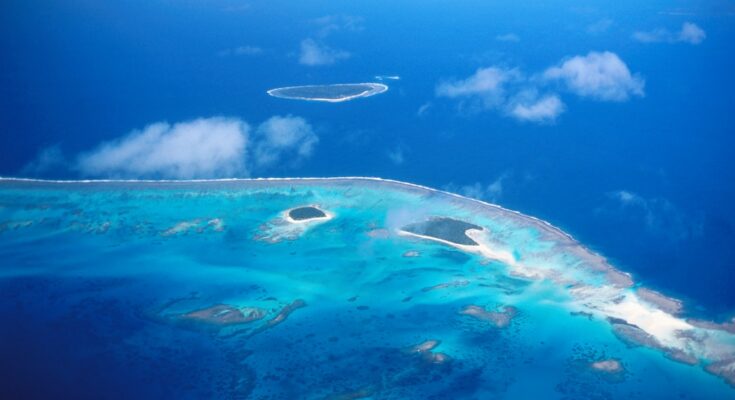Climate change can no longer be stopped in the short term – even if emissions were stopped immediately, many consequences cannot be avoided. That’s why the UN COP30 climate conference in Belem is currently focusing on a long-neglected topic: adaptation to climate change.
Levees hold back floods, green roofs cool cities, mangrove forests slow storm surges – and hardly anyone notices. Climate adaptation is the unsung hero of climate protection: it prevents disasters before they are visible and is therefore often overlooked.
What is climate adaptation?
Climate adaptation means preparing to face the inevitable consequences of climate change: heat, heavy rain, drought and rising sea levels. In contrast to climate protection measures to reduce emissions, this is about protection, resilience and adaptation – in short: about getting through the crisis safely.
Why adaptations are not popular
But the problem is why climate adaptation is often ignored: adaptation is politically unattractive. The benefits are often “invisible”: Well-constructed levees can prevent damage that might never occur – success is hard to market. There is also concern that with a strong focus on climate adaptation, the cause of the problem will be forgotten: namely climate protection to stop climate change.
Another “unattractive” circumstance: With a lot of climate adjustments, you can only save future costs and not make money. Big solar park in Nigeria? There are private investors who can make money with these climate-friendly energy projects.
But embankments or green spaces to protect against flooding or heat? This is not a business reason, but “just” spending to protect populations and ecosystems. This means: At the World Climate Conference, the adaptation forum must be filled by state funds, not private funds. Therefore, the global community must face both problems: stopping climate change AND preparing to face its consequences.
Developing countries need 14 times more
Therefore, adaptation is also on the agenda at COP30 in Belém – with a focus on the Global Goal on Adaptation (GGA). Although the GGA was included in the Paris Agreement in 2015, little progress was made in its development in the following years. “Ten years after Paris, we still don’t know how to implement these goals,” said Lina Yassin, an LDC adjustment negotiator in Belem.
According to the UN Adaptation Gap Report, developing countries need 310 to 365 billion dollars annually for adaptation – currently only about 26 billion dollars are flowing, which is twelve to 14 times less.
Adaptation or emission reduction, which is more important?
Lina Yassin advocates for least developed countries in COP30 negotiations. The LDC group is calling for adaptation funding to be tripled by 2030. “Without money, everything we are discussing here is symbolic. We will go home and nothing will change,” Yassin warned at COP30.
At the same time, experts warn that focusing too much on adaptation could delay the much-needed transition away from fossil fuels. The same thing happened to Wafa Misrar, who took part in COP30 with “Climate Action Network Africa”: “Adaptation without reducing emissions is like emptying a sinking boat without filling the holes.”
This year, countries will gather at the UN Climate Change Conference in Belem to discuss the global fight against the climate crisis.
FOCUS Earth reports online for you on COP30: You can follow all the important developments, background information and latest updates here on the ticker.
Bill for doing nothing
However: If you don’t do anything to adapt, you will pay more. Sehrish Usman of the University of Mannheim and economist at the European Central Bank points out: In the summer of 2025 alone, heatwaves, heavy rains and drought in the EU caused direct damage worth around 43 billion euros, with long-term economic consequences of more than 126 billion euros in 2029.
The benefit-cost ratio for adaptation investments will be high: research suggests a ratio of 2:1 to 10:1. This means that every euro invested saves you up to ten euros in losses. However, only a small proportion of funds worldwide are spent on adaptation compared to reducing emissions.
What does adaptation actually look like?
Climate adaptation works – and often produces multiple returns. These mutually beneficial measures can not only protect communities and infrastructure, but also improve quality of life, biodiversity and even property values.
- Concept of Sponge City making cities resilient: green roofs, permeable areas and parks store rainwater during heavy rains and release it during hot weather. In Germany, cities such as Berlin, Bonn and Mannheim also rely on the sponge city concept.
- Flood protection: The Dutch “Space for Rivers” program has backed up embankments, restored floodplains and built bypass canals – more than 30 projects that give more space to rivers while creating recreational areas. There are also flood projects in Germany, for example in North Rhine-Westphalia (Emscher-Auen), where the water structure has been denatured.
- Hot action plan has saved many lives, for example in Ahmedabad (India), where South Asia’s first heat protection plan was implemented in 2013 – with an early warning system via SMS, cooling chambers and more.
- They are also innovative floating housewhich increases when floods occur. In Rotterdam, for example, the Floating Pavilion was built according to this principle.
Ultimately, adaptation and mitigation are one in the same: fewer emissions will mitigate the consequences in the long term, but adaptation already saves lives and infrastructure today.




